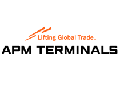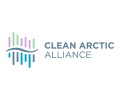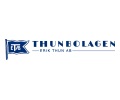OPEC+ maintains firm grip on oil supply, largely keeping steep oil cuts in place for April

OPEC and its allies appear intent on turbocharging the tightening of the oil market, agreeing to largely leave their hefty production cuts unchanged for April – including Saudi Arabia’s extra 1 million b/d curtailment.
In making such a deal, the OPEC+ alliance heeded Saudi energy minister Prince Abdulaziz bin Salman’s calls to keep a tight hold on oil supply, despite warnings from analysts and key consuming countries that the market rally risks impairing a global economy still reeling from the pandemic.
But it is that economic uncertainty that prompted the producer group to maintain its cuts instead of unleashing production, delegates said, with many potential pitfalls ahead, including an uneven vaccine rollout and stringent lockdown measures that are a damper on oil demand.
“I belong to the school of being conservative,” Prince Abdulaziz said after the meeting, having earlier told the OPEC+ conference that “the right course of action now is to keep our powder dry, and to have contingencies in reserve to insure against any unforeseen outcomes.”
He pooh-poohed analyst calls that a commodity supercycle was on the upswing, saying there were many sobering indicators lingering in the physical market, including still-bloated oil inventories: “I’ll believe it when I see it.”
According to the agreement, the OPEC+ alliance, which controls about half of the world’s production capacity, will mostly maintain its quotas, with Russia allowed a 130,000 b/d increase and Kazakhstan a 20,000 b/d rise, while Saudi Arabia said it would continue implementing its voluntary cut, sources told S&P Global Platts.
It means the group will keep about 8 million b/d of crude production, or roughly 8% of prepandemic supply, off the market for another month.
The developments put traders on the wrong foot. They had largely expected the bloc to release as much as 1.5 million b/d of production – the maximum 500,000 b/d OPEC+ quota increase allowed by the terms of its deal combined with Saudi Arabia ending its 1 million b/d supplemental cut.
Platts assessed Dated Brent at $67.45/b on March 4, a 4.5% rise, continuing a remarkable bull run for the global crude benchmark.
Deciding how to unwind
The alliance will next meet April 1 to decide on May output levels.
Prince Abdulaziz said Saudi Arabia plans to “gradually phase in” a rollback of its extra cut after April but that it would depend on market conditions, as well as how closely the rest of OPEC+ hews to its production caps. He said he was aiming for global oil inventories to draw down to 2015-19 levels, but refused to elaborate on what other market indicators he would be monitoring.
“We will see what the market requires,” he said. “We are not required to bring it back fast or furious. We will bring it back at our convenience. It is our voluntary cut, it is for us to decide.”
Russian counterpart Alexander Novak successfully argued for his country’s looser quota, citing “difficult conditions,” sources said. Russia has seen its domestic fuel prices surge in recent weeks, with the government directing domestic crude supplies to refineries to alleviate the shortage.
It was yet another concession granted to Russia, which has consistently pushed to raise output to reclaim market share and already has overproduced its quota by the most in the group. It has largely been given a pass on its noncompliance due to the heft it brings to the alliance.
The agreement allows quota busters until July to implement their so-called compensation cuts to make up for their excess.
According to an OPEC+ document seen by S&P Global Platts, Russia has pumped over its cap by an average of 90,000 b/d since May, followed by Iraq at 68,000 b/d.
Monitoring the market
Novak and Prince Abdulaziz held bilateral consultations late March 3, after a meeting of the key OPEC+ monitoring committee they co-chair ended with no formal recommendation on April quotas.
In an interview with Rossiya 24 after the OPEC+ decision was announced, Novak said Russia would use its higher allotment to “increase refining volumes at refineries and meet increasing demand on oil products in Russia.”
He said OPEC+ would closely monitor market balances so that prices do not overheat, but added: “I think the situation will be stable from now on.”
Prince Abdulaziz, however, dismissed any concerns about the surging market, which has seen Dated Brent rise some 80% since the start of November.
Although the crude market is in a strong backwardation, which should induce further draws of barrels from storage, the Saudi minister said that is but one market signal to track.
“I don’t care about prices, I care about discipline, I care about bringing inventories down,” he said. “Backwardation may mislead you because sometimes it is based on expectations. I don’t take backwardation solely. It’s backwardation, inventories within the contours of 2015-2019 [levels], and it is also how much we see the early indicators of the economy.”
Source: Platts

 Hellenic Shipping News Worldwide Hellenic Shipping News Worldwide, Online Daily Newspaper on Hellenic and International Shipping
Hellenic Shipping News Worldwide Hellenic Shipping News Worldwide, Online Daily Newspaper on Hellenic and International Shipping























 PG-Software
PG-Software